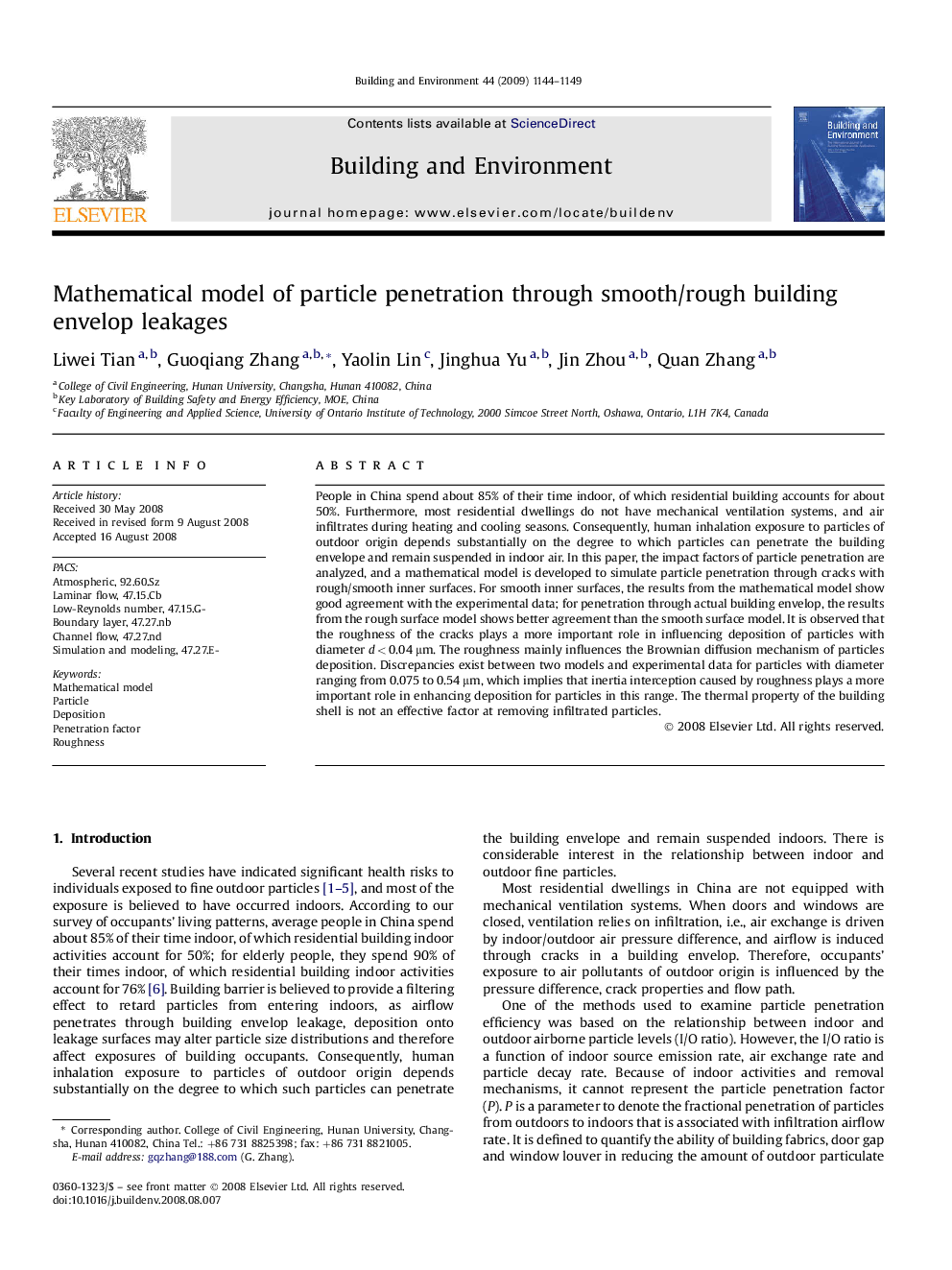| کد مقاله | کد نشریه | سال انتشار | مقاله انگلیسی | نسخه تمام متن |
|---|---|---|---|---|
| 249556 | 502616 | 2009 | 6 صفحه PDF | دانلود رایگان |

People in China spend about 85% of their time indoor, of which residential building accounts for about 50%. Furthermore, most residential dwellings do not have mechanical ventilation systems, and air infiltrates during heating and cooling seasons. Consequently, human inhalation exposure to particles of outdoor origin depends substantially on the degree to which particles can penetrate the building envelope and remain suspended in indoor air. In this paper, the impact factors of particle penetration are analyzed, and a mathematical model is developed to simulate particle penetration through cracks with rough/smooth inner surfaces. For smooth inner surfaces, the results from the mathematical model show good agreement with the experimental data; for penetration through actual building envelop, the results from the rough surface model shows better agreement than the smooth surface model. It is observed that the roughness of the cracks plays a more important role in influencing deposition of particles with diameter d < 0.04 μm. The roughness mainly influences the Brownian diffusion mechanism of particles deposition. Discrepancies exist between two models and experimental data for particles with diameter ranging from 0.075 to 0.54 μm, which implies that inertia interception caused by roughness plays a more important role in enhancing deposition for particles in this range. The thermal property of the building shell is not an effective factor at removing infiltrated particles.
Journal: Building and Environment - Volume 44, Issue 6, June 2009, Pages 1144–1149